Written by Claire Kearney-Volpe
In 2016, Mayor Bill de Blasio and the New York City Mayor’s Office for People with Disabilities presented the Ability Project with the ADA Sapolin Award for their “fearless and innovative approach to developing tools that will improve the lives of people with disabilities.” The Ability Project builds relationships and designs solutions to eliminate barriers for underserved audiences. In spring 2017, Cooper Hewitt partnered with the New York University Ability Project to develop new ideas for broadening access to the museum.
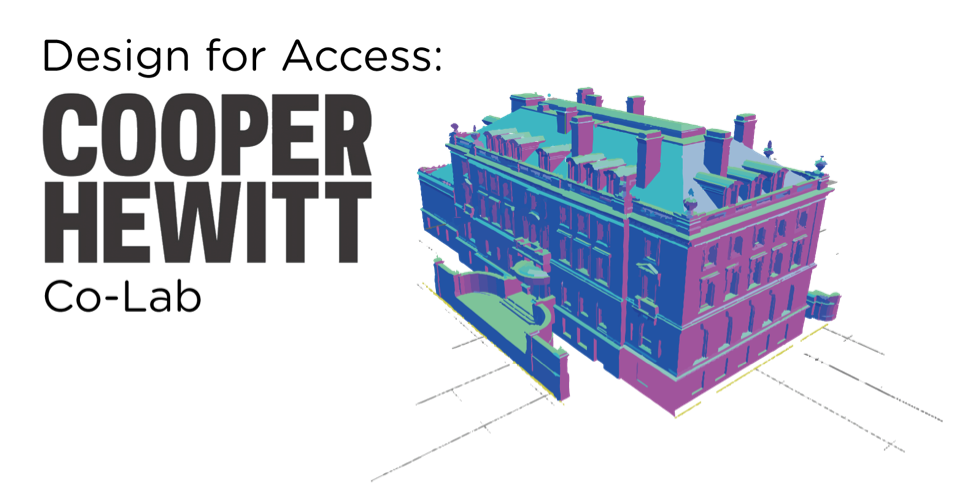
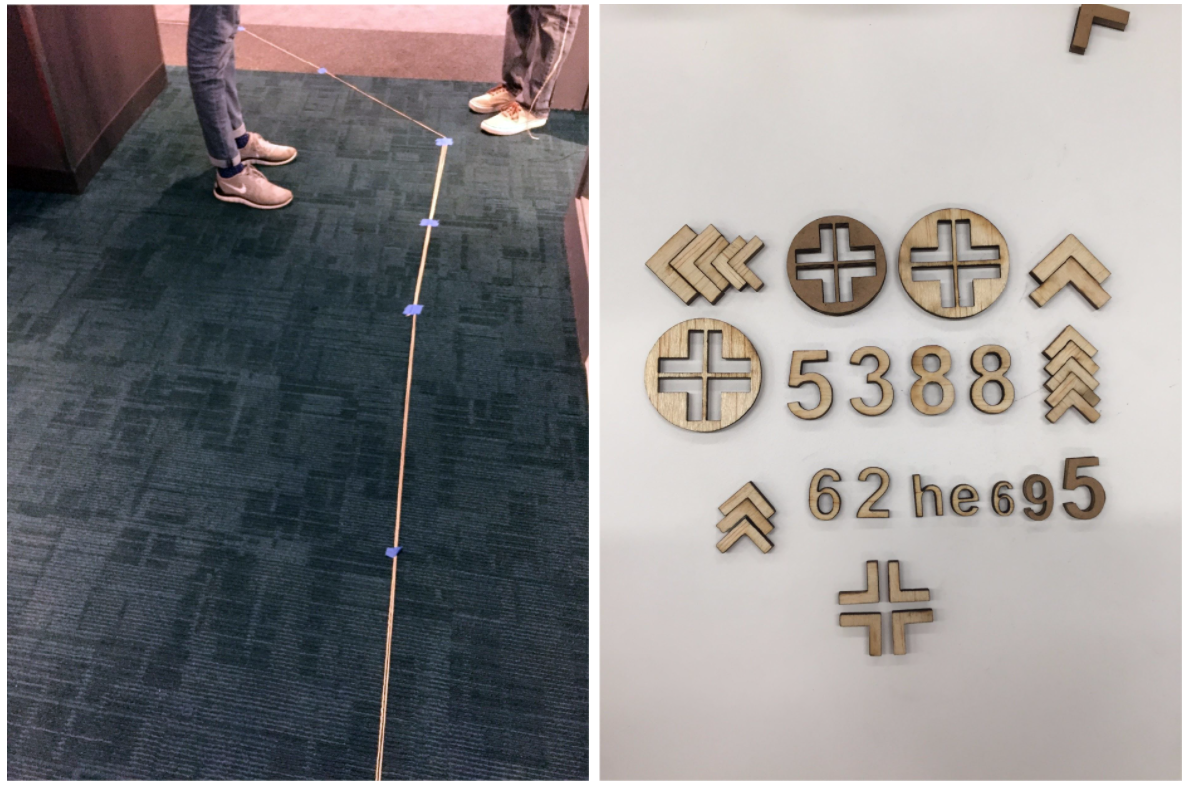
Testing tactiles: NYU students test out the viability of a tactile wayfinding prototype as part of an Ability Project class. Creating raised surfaces or textures in the museum can enable people with visual impairments to become aware of installations around them. This technique is utilized throughout pedestrian avenues in New York city and around the world. Pictured above are some Ability Project prototype solutions for museum wayfinding.
Established in 2013, the New York University Ability Project is an interdisciplinary research space dedicated to the intersection between disability and technology, with an aim to foster collaboration among individuals with disabilities, community organizations, and NYU students and faculty. A variety of students and professionals—engineers, designers, educators, speech and occupational therapists, and individuals with disabilities—work together to create opportunities for teaching, learning, and research. Students across three of NYU’s schools comprise the Ability Project whose majors range from occupational therapy and integrated digital media to interactive telecommunications. Classes in the basics of methodology in assistive technology, accessible design and development, research, prototyping, and user interaction/experience design for museums round out the program’s offerings. Among the Ability Project’s fundamental principles is that technology serves people best when they participate in its design. Participatory research ensures access to the critical knowledge of those living with disabilities while also offering opportunities for those without disabilities to better understand what life is like for their collaborators. Collaboration, rather than problem solving in silos, produces more creative results.
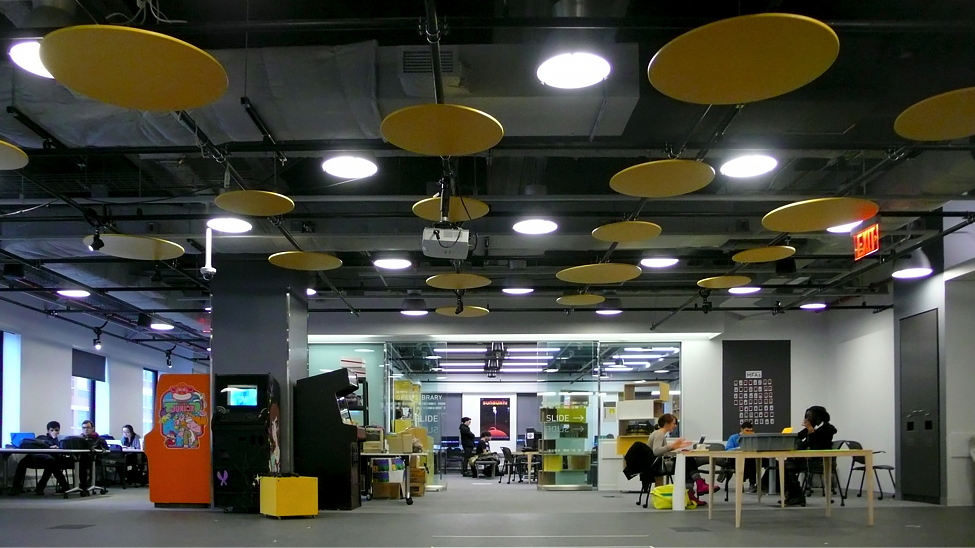
Inside NYU Tandon’s Media and Games Network (MAGNET), where the Ability Project is located.
The Ability Project has developed several ventures in partnership with New York City advocacy groups and agencies. In 2015, the program partnered with AT&T to lead the ConnectAbility Challenge, a three-month technology challenge designed to spur innovation for people with physical, social, emotional, and cognitive disabilities. The competition, which coincided with the 25th anniversary of the Americans with Disabilities Act, resulted in sixty-three proposals for software, wearable, and other technology solutions from developers in sixteen states and fifteen countries aimed at enhancing the lives of people with disabilities. For the Lavelle School for the Blind in the Bronx, the Ability Project joined with Bridging Education and Art Together (B.E.A.T.), whose groundbreaking program Beat Rockers works with blind and visually impaired students to develop confidence through music. In a semester-long course, Ability Project students were tasked with designing and developing accessible tech enhancements to enable the Lavelle students to fully participate in B.E.A.T.’s music-making through the use of voice, body, and a microphone.
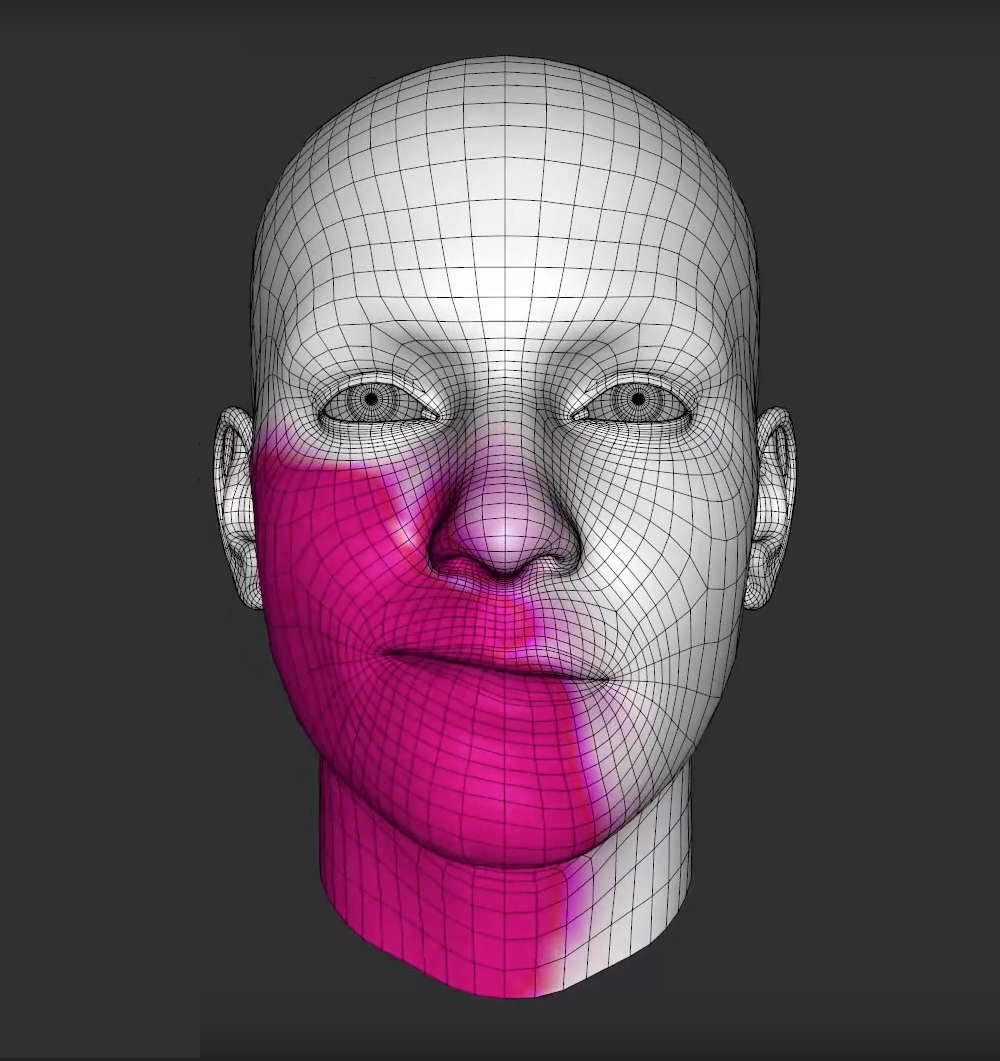
Markus Proell’s prize-winning project the KinesicMouse, from the AT&T/Ability Project Connect Ability Challenge. The KinesicMouse software allows for hands-free, facial expression-based control of a PC.
Eager to continue its revolutionary work, the Ability Project teamed with researchers at NYU’s Hospital for Joint Diseases to investigate how to provide growing children suffering from cerebral palsy with affordable orthotics/prosthetics. Using a combination of 3D-modeling and printing techniques, Ability Project designers help to fit participants with low-profile yet stylish rehabilitation orthotics that can be adjusted and reprinted as they grow.
During the spring 2017 semester, Ability students worked with Spectrum Cable to evaluate and test Spectrum’s existing home-entertainment products and services. Based on findings and feedback from subscribers with disabilities, the students will design accessibility solutions.
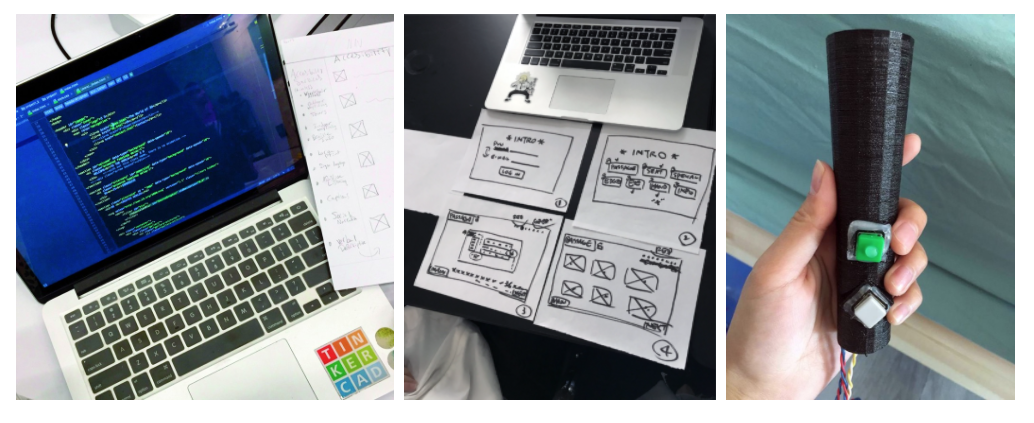
From left to right: Student’s process documentation for the Ability Project and Cooper Hewitt Co-Lab course; Students’ wireframes of an accessibility toolkit—an online tutorial to inform exhibition design; Accessible musical interface designed with feedback from students at the Lavelle School for the Blind, by Ishaan Chaudhary, Kai-han Chang, Nicola Carpeggiani, Satbir Multani, and Yi Zhao.
Using a museum as a laboratory is new territory for the program and applying the tenets of design thinking and process proved to be exciting and challenging. In the Ability Project’s partnership with Cooper Hewitt, the museum served as client and creative inspiration. Some of the challenges experienced for the first time for the students as both designers and visitors were the architectural constraints of a landmarked historical home and the requirements that come along with museum display and presentation. Collaborators looked at designs for the museum’s website and experimented with Cooper Hewitt’s collections application program interface to find ways for fully integrating visitors with disabilities into the Cooper Hewitt experience. In a comprehensive presentation, four groups each shared research, user testing analysis, and iterative prototyping designs. The parameters that the students offer real, scalable recommendations resulted in replicable work that considered cost, physical constraints, and multiplicity of audiences. The Cooper Hewitt partnership not only schooled the students in new ways of thinking about design but revealed design’s potential for enhancing and welcoming new audiences to the museum.
Claire Kearney-Volpe is a Doctoral Fellow and Adjunct Professor for the NYU Ability Project. She works on a variety of human-centered assistive and rehabilitation technology projects and is active in the digital accessibility community. This article was originally published in the Spring/Summer 2017 issue of Design Journal.
One thought on “The Ability Project: Empowering People with Disabilities Through Design”
Ann McCann on June 3, 2018 at 12:48 pm
Does a product exist for people who have idiopathic neuropathy in the feet and legs ? I have had such a condition since 2005. I worsens every year.